To view this content, you must be a member of the Rose City Review Patreon at $10 or more
Already a qualifying Patreon member? Refresh to access this content.
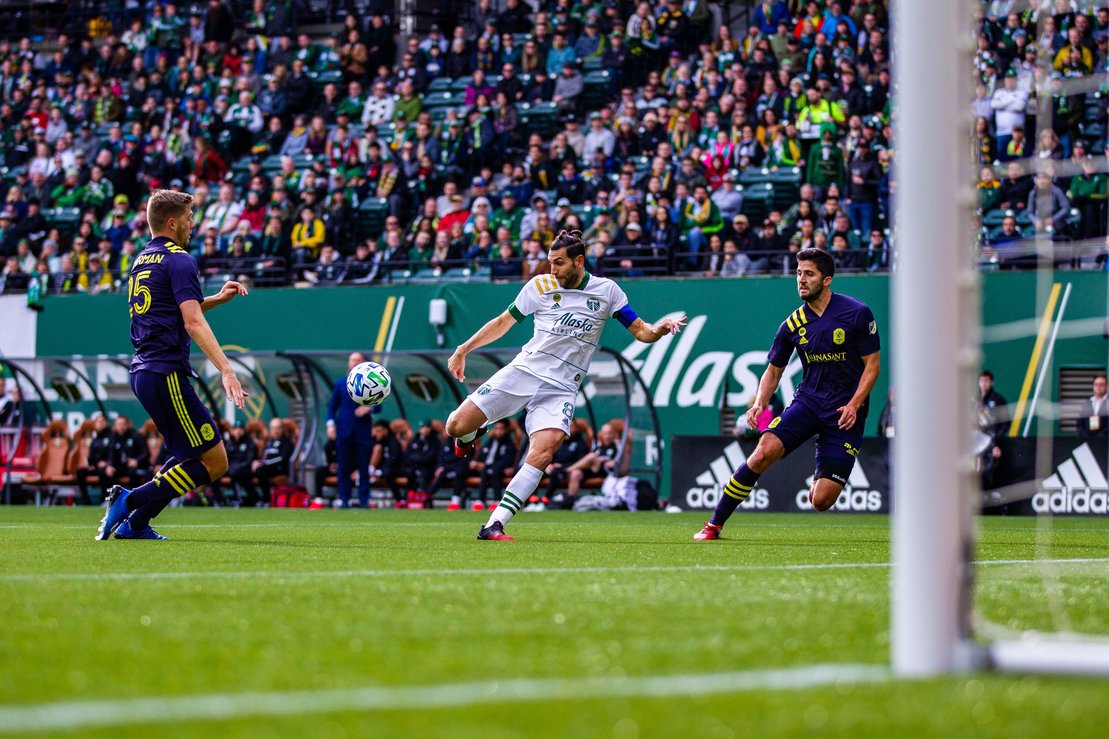
Players have been tested, teams are beginning to filter into Orlando, and we are just over a week away from kickoff of the MLS is Back Tournament.
Nearly four months have elapsed since LAFC and the Philadelphia Union played to a 3-3 draw back in early March. And before Inter Miami and Orlando City take to the field, Rose City Review talked to Joe Lowery—who currently co-hosts the MLS Assist Podcast—about the Timbers’ potent attack, defensive question marks, and the many ways in which they could create chaos in Orlando.
(The conversation below has been edited for clarity and length)
Kyle Pinnell: It’s been about a week since the draw. What were your initial thoughts on Group F, and more specifically, the Portland Timbers?
Joe Lowery: It’s going to be really interesting in terms of the on-field stuff, right? It’s going to be interesting to see how teams take things and how coaches want to approach the group stage which is actually worth points long term. There are a lot of questions as far as that goes, but looking specifically at Group F, there are a lot of unknowns in that group, I think.
You have LAFC, and we kind of know what we are going to get from them, although it will be interesting with the addition of Andy Najar to see how that is going to change things if he gets minutes. With the Timbers, Houston, and the Galaxy, to be honest with you, those teams all have large question marks around them.
The Timbers, I don’t think they defended well. Their defensive block, which is really really important to how they want to play, wasn’t very solid. The Galaxy are still trying to figure out how to attack with Chicharito and Cristian Pavón, and then the Houston Dynamo are right in this revamp under Tab Ramos, and they’ve only had two games to sort that out—those games were without Alberth Elis. We don’t really know what the Dynamo look like, we know what the Timbers want to be, and we know what the Galaxy want to be, but they aren’t there yet either. There are a lot of unknowns, especially after LAFC, in that group.
Pinnell: Yeah. We know how the Timbers want to play, they want to press and play a beautiful style of soccer, but that has turned into counter-attacking, playing long balls over the top, and hoping for interesting results. Over the first few games of the season, what have you seen when you watched the Timbers?
Lowery: With the Timbers, it’s interesting to me because every coach says that they are going to play with the ball, every coach wants to have the ball for the most part. The Timbers, in a way, still have the pieces to do that. They have two of the highest skilled on-ball players in the league with [Diego] Valeri and Sebastián Blanco. You think about having those two guys as attacking midfielders in a possession scheme, that sounds pretty nice, I love that idea. You have Diego Chará who is nice on the ball as well and he can do things in possession as a number six.
They have options here in certain spots, but not all the way around, and I think that is the problem here. They have guys along the backline, specifically center backs, that I don’t think are great with the ball. I’ll have to watch them more, but they never stood out to me as being these offensive powerhouses, which makes it difficult to keep possession a lot of the time.
Whether it’s the center backs or it is the fullbacks or the team not having that cohesion in possession, so often I think they revert to what seems to be their DNA for one reason or another. That’s sit in a defensive pocket, press occasionally, and then win the ball and have Diego Valeri and Sebastian Blanco be the playmakers on the fast break. They can do more things than that. They can hold the ball and play through those guys in possession, but for some reason, they seem to continue to go back to that counter-attacking style, which is fine, it’s a totally viable approach, it just seems like they are lacking a little bit in terms of their tactical identity with the ball on the field.
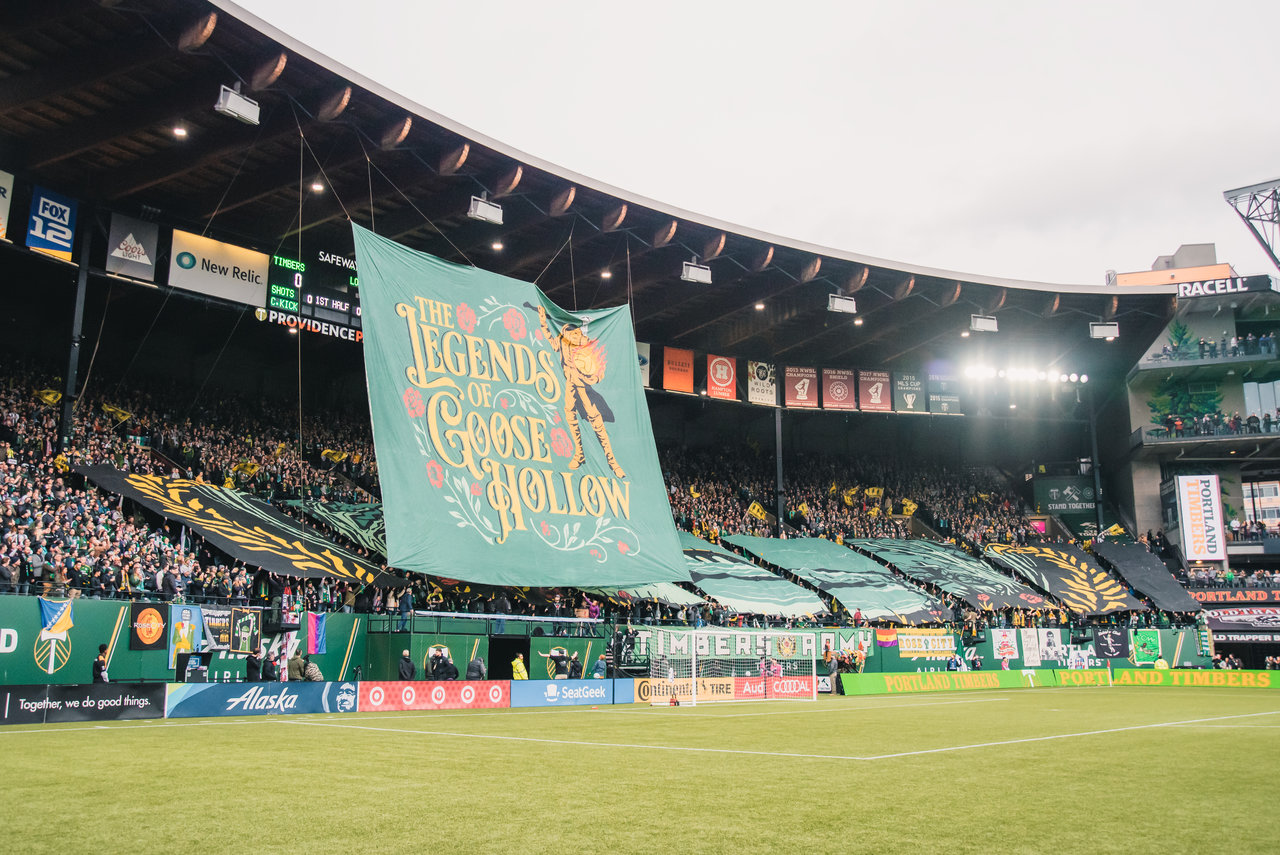
Pinnell: Going back to what you’ve seen out of the Timbers, when you watch them in Orlando, what will you have to see change to make it seem like the team is going in the right direction or that you’re seeing positive change?
Lowery: I think with the Timbers, seeing them shore up their defensive block would be big. Because I don’t think they’re ever going to be the team that has the ball for 60 percent of the game, or at least not in most games. When you’re not that team, your defensive block is really important because you’re playing against the ball for a lot of the game.
Going back to LAFC as an example, imagining a matchup between those two teams on the field, right now I don’t have a lot of confidence in the Timbers’ defensive shape to be able to contain a possessive team like that. But if they come in, they understand their roles in a defensive block—if they’re in a 4-4-2 or 4-5-1, whatever it is—they understand their assignments, where they need to be, and how they’re going to shift to deny penetration and force the ball wide if that’s what [head coach] Gio [Savarese] wants to do. They’re going to need to know when to trap, when not to trap, and when to step versus when not to step. If they can work that out, and if they have worked that out in this last three-month break, that’s going to be a great asset for them. That takes the Timbers from being a bad team in my mind to being a dangerous team that you don’t really want to play.
Pinnell: Looking at Diego Chará, he sometimes drops into the backline to help the team build possession and carry the ball into the midfield. How do you see the Timbers getting the ball from the backline, which you’ve said yourself doesn’t have any players excel at playing out of the back, into the midfield where they can be more dangerous?
Lowery: Having [Diego] Chará drop a little bit is a look that I actually really like with the Timbers. Maybe it’s Valeri, maybe it’s Blanco, maybe it’s Paredes dropping in a little bit; it allows the midfielders to get touches on the ball and distribute, which I appreciate. You just find the balance with that because you also want Valeri and Blanco higher up the field as well. Maybe you bring one of them down deeper into midfielder and you have the other one staying a little higher, that’s fine. I like that rotation with [Diego] Chará dropping from his six spot in between the center backs, moving the center backs out wide, pushing the full backs a little higher, and then you have Valeri and Blanco in those interior channels or in the middle of the field.
Then you have Yimmi Chará or whoever else is playing up front, that allows you to get those guys touches off of passes from Valeri and Blanco. Moving [Diego] Chará deeper I actually think is a pretty sustainable and successful look for the Timbers.
Pinnell: Now, when you observe the roster as a whole, who are some important players that you will be keeping an eye on?
Lowery: I want to see if/when/where Jeremy Ebobisse plays. I don’t think anybody really knows where he is going to play. I think that he should play as a [No.] 9 or as part of a front two, but that can be difficult with needing to give Valeri some touches up top, or how do you defend as part of a front line in a defensive block. I want to see where Ebobisse factors in, because I think he has something to bring to the table that he hasn’t had the chance to show for the Timbers.
Outside of that, I want to see more from Paredes as well in midfield. He’s a guy who is the unsung hero of that midfield in a lot of ways. [Diego] Chará gets a lot of headlines, and then Valeri and Blanco get the rest, so it’s a little challenging to know exactly what impact he’s going to have in this tournament. I like him as a player; I want to see more of him and focus on him more in that Timbers midfield. So Ebobisse and Paredes are the two guys for me that I am curious to watch with a more analytical eye on this tournament.
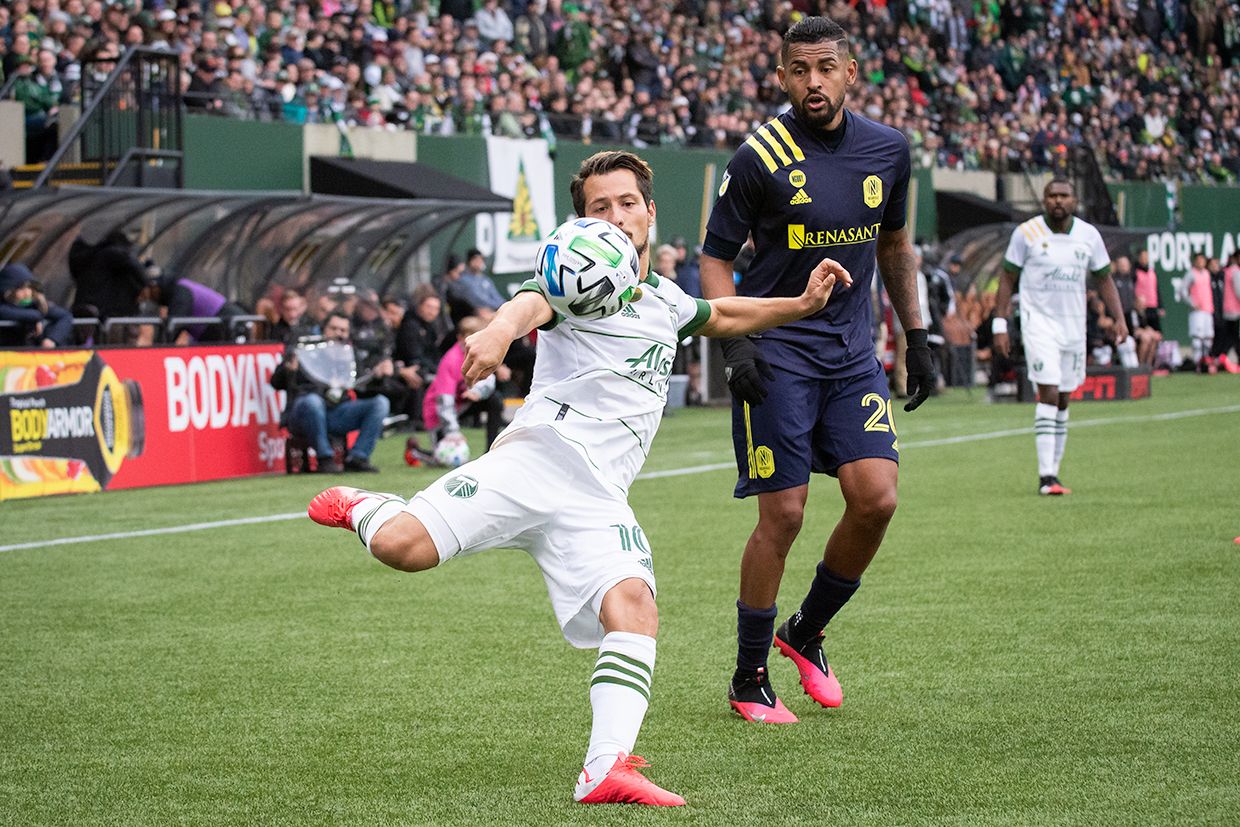
Pinnell: We started our conversation by talking about Group F as a whole, and honestly, the two teams that advance from the group could be a toss-up. With every team having questions, it might come down to which team has the most tactically adept coach who can tinker enough to find that formula to get them through the group. What coach do you think gives his team a distinct advantage for that second spot?
Lowery: So far, Barros Schelotto has been very predictable with how he plays, getting crosses into the box early and often throughout games. I think that unless we have a come-to-Jesus moment there with Barros Schelotto, then we’re going to see the same thing which is fairly predictable in a lot of ways.
Tab Ramos, I just straight up don’t know. Houston’s roster I don’t think is as talented as the Galaxy’s, maybe more similar to the Timbers in that regard. And with Gio Savarese, they’ve got the MLS Cup appearance, sure, but I’m not necessarily convinced that the Timbers are the finished product right now either. I’m not sure whether one coach has the tactical edge over another, to be quite honest with you.
Outside of Bob Bradley—I think he’s the number one guy in this group if we’re looking at just coaches. In terms of talent, though, if the Galaxy don’t advance from this group, and they actually try because we don’t know how the on-field quality is going to be, with Cristian Pavon especially—who I think is right up there with Carlos Vela in terms of best player in MLS, I think we’ll see that if we get a season this year—if they don’t make it out of this group, that’s going to be a little more unfortunate for them than it is for the Timbers or Dynamo. But as far as coaches go, I think it’s pretty even.
Pinnell: I agree, Bob Bradley definitely seems to be a level above most other coaches in this league. In an article that I recently published, I mentioned how the Timbers might be able to exploit space between lines. In a tournament like this, how do you think that the team could create that space?
Lowery: I think first of all that LAFC and Houston will open themselves up, which is good for a team like Portland because they want to attack into that open space. Looking at the Galaxy, that’s a different question. A lot of times they are going to get forward just because of the roster they have. They have the attacking talent, so it would be ridiculous for them not to get forward.
Still though, the Galaxy don’t play the same way that LAFC do or that Tab Ramos wants to do with Houston. So against a team like the Galaxy, they’re going to have to have possession a little bit more. They’re going to have to rely on their playmakers to get balls in from the backline or from Diego Chará, and then allow Diego Valeri’s off-ball movement, which is very very good, and have that captain them to better possession results. They have the tools in possession, and in the attack especially.
Getting the ball to Diego Valeri is one thing, but once they get the ball there, if they can get the ball there, then you are really cooking with something. If Valeri and Blanco can get on the ball in dangerous spots and get the ball to those spots in the first place, then the Timbers can pose a real threat with the ball against a team like LA. Creating and exploiting space in possession is going to be the thing for them, and I really do think that it comes down to how well their playmakers can get into spots and then distribute from there.
The rest of our conversation with Lowery is available in audio format for our $10 Patrons. You can find it under the “Patreon” tab on our website.
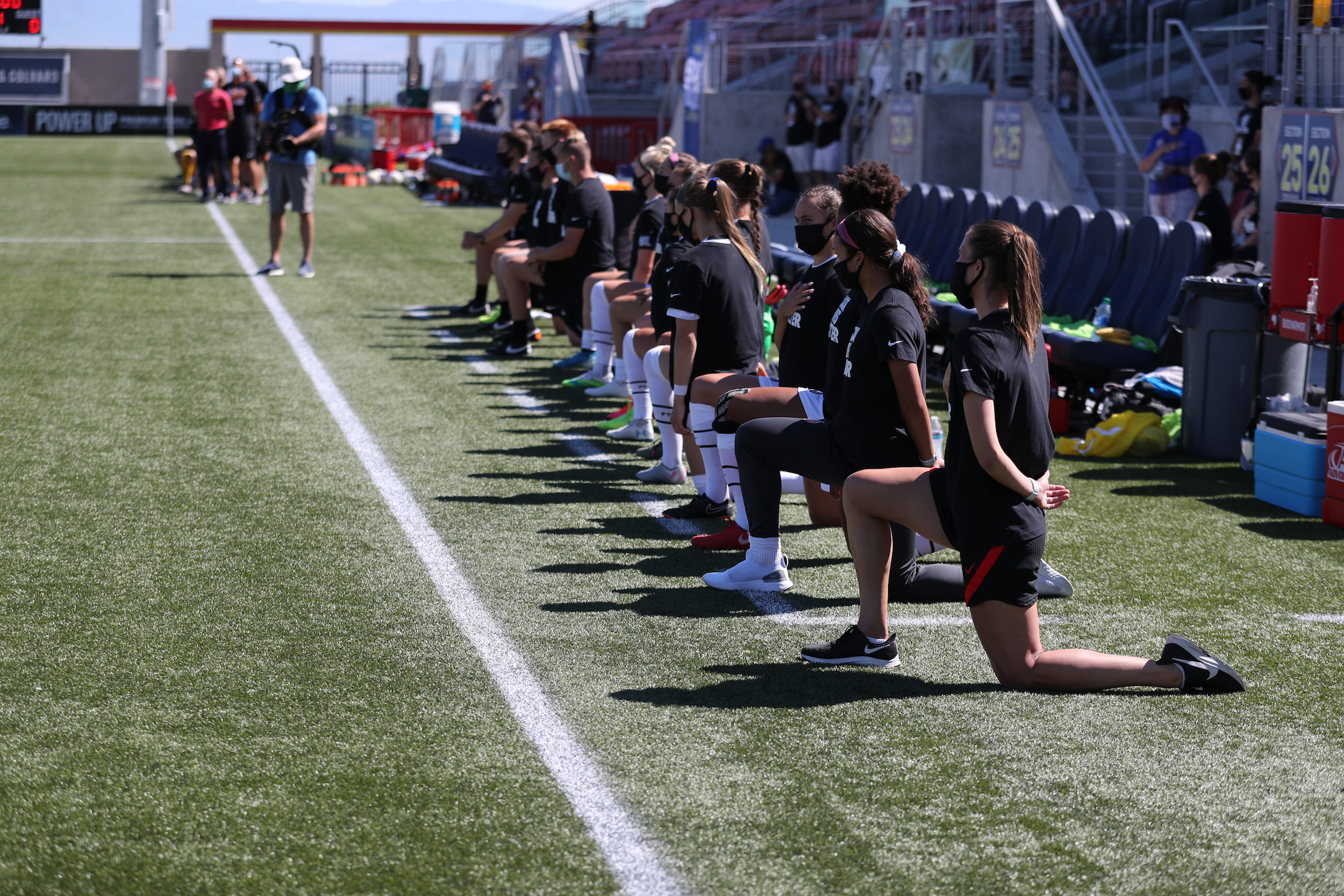
There was a tweet today, from a certain talking head/professional troll in the soccer space, about how we’ve reached the point—four years after Colin Kaepernick lost his job for declaring his life mattered as much as those of his white teammates, four years after US Soccer prohibited its players from publicly standing with him—where athletes find it hard not to kneel for the anthem.
It’s an incredibly inane, annoying take, engineered to provoke outrage, and that’s why I’m not linking to it here. Still, I think it expresses a line of reasoning that appeals to broad segments of white America, and that line of reasoning is worth unpacking.
To get the obvious out of the way: being wrong about this issue, or any human rights issue, is not brave, merely evil.
To dig down a little further: if you were an alien just finding out about human customs, seeing the photo at the top of this article with no further context, you probably would come to the conclusion that human beings kneel on one knee before sporting events, and that not doing so is a breech of custom that takes a certain amount of courage. This is how our species is wired, for the most part; it’s difficult for us to do things other than what people around us are doing.
But that conclusion willfully erases context. These players didn’t all show up to the stadium and put on their Black Lives Matter shirts because they saw everyone else was wearing them; nobody scrambled to take a knee when the anthem started to avoid looking out of place. This was a concerted, intentional effort by players on both teams—across the whole league, even. They had talked about this. They had listened to each other. This was not an easy decision.
Conversations within teams didn’t all start right away. Simone Charley talked to The Equalizer about how hard it was, in the days after George Floyd’s murder, showing up to training and deciding to act like soccer mattered, and seeing how easily that decision came to her white teammates.
In Portland, it took a few days for those conversations to start—prompted by both Black and white players, but in particular, according to Sophia Smith, by AD Franch—and nobody should take for granted that they started at all. They happened because Black women on these teams did the work of talking to their white teammates about experiences those same teammates haven’t always been willing to listen to. This sport is as white as it’s ever been, and many of the players who kneeled today come from backgrounds that haven’t forced them to ever think critically about racism—that have, in fact, actively discouraged it.
So while it’s true there’s been a massive, sudden shift in public opinion over the last month on the acceptability of publicly opposing racism, don’t think for a second that this show of support for Black lives was a foregone conclusion. It wasn’t the brands that brought us here. It was Black players fighting for their lives and finally being heard by their teammates.
Furthermore, there are stark facts here, facts that will be recorded in history: these players took their stance in an empty stadium, but that empty stadium was on broadcast television. As the first American sports league to return to play. That’s the biggest platform women’s club soccer has ever been on.
The players knew what this platform meant. It meant they were opening themselves up to criticism that no doubt would also have been directed at male athletes doing the same thing, but which, no doubt, will be more vicious thanks to their gender. Have things changed since 2016, when Crystal Dunn didn’t kneel because she was afraid—for good reason—USSF might “rip up her contract“? Of course. But you’d have to be an alien to sincerely believe there won’t be backlash.
But this is what can’t get lost in the noise: the players also knew how significant the moment was, and they knew they had to take it, and use it to say something. It’s okay for us to be proud of that.
The danger is in letting this gesture exist as a mere gesture, and in deciding once the tournament is over that we’ve all done enough. It’s great that we’ve finally reached the point in this league where players can express solidarity against racism and police violence without fearing for their jobs. Now it’s on us, at home, to commit to standing with them and doing the actual work of putting an end to those things.
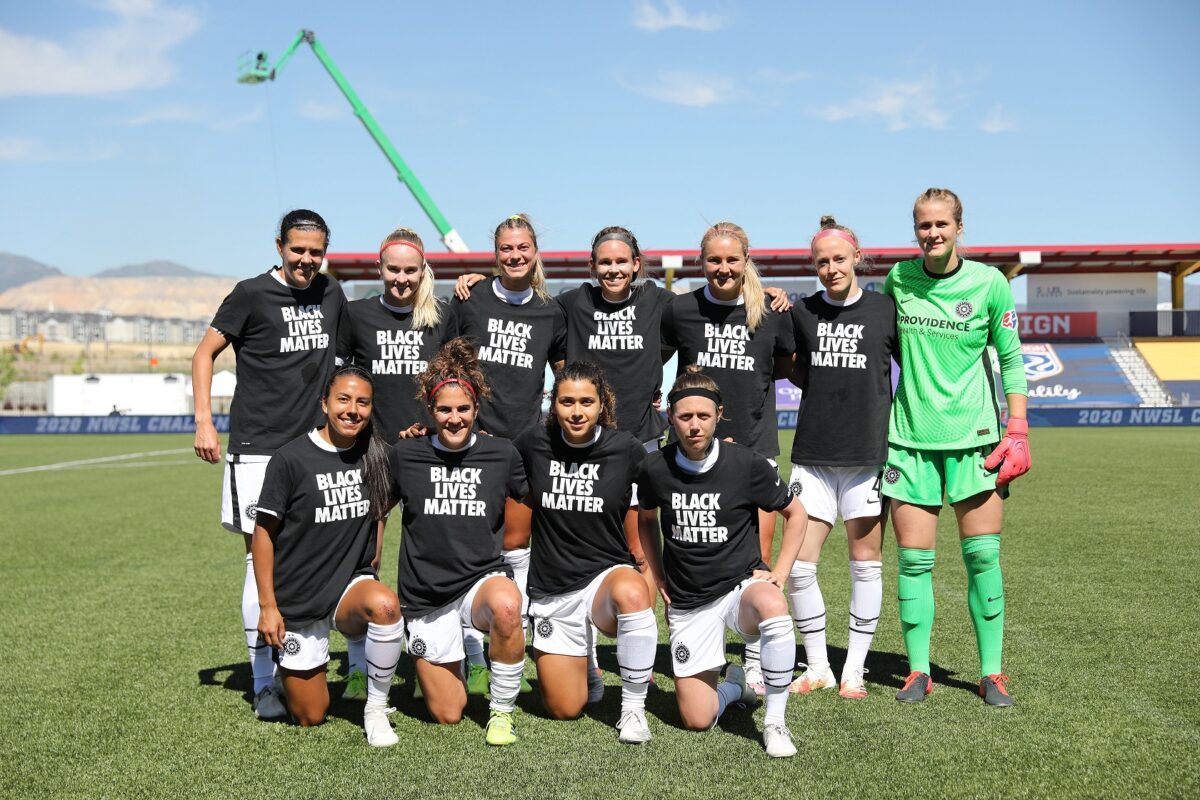
The NWSL Challenge Cup has begun, marking the return of live professional sports to the United States.
In a reminder of just how much has been going on in the world outside the NWSL bubble, all the starting players wore Black Lives Matter warm-up shirts and Black Lives Matter armbands throughout the game, and took a knee for the national anthem. Which was played by a saxophonist in a suit, with slicked-back hair, who could not resist getting in some delicious licks at the end of a very smooth rendition of the Star-Spangled banner.
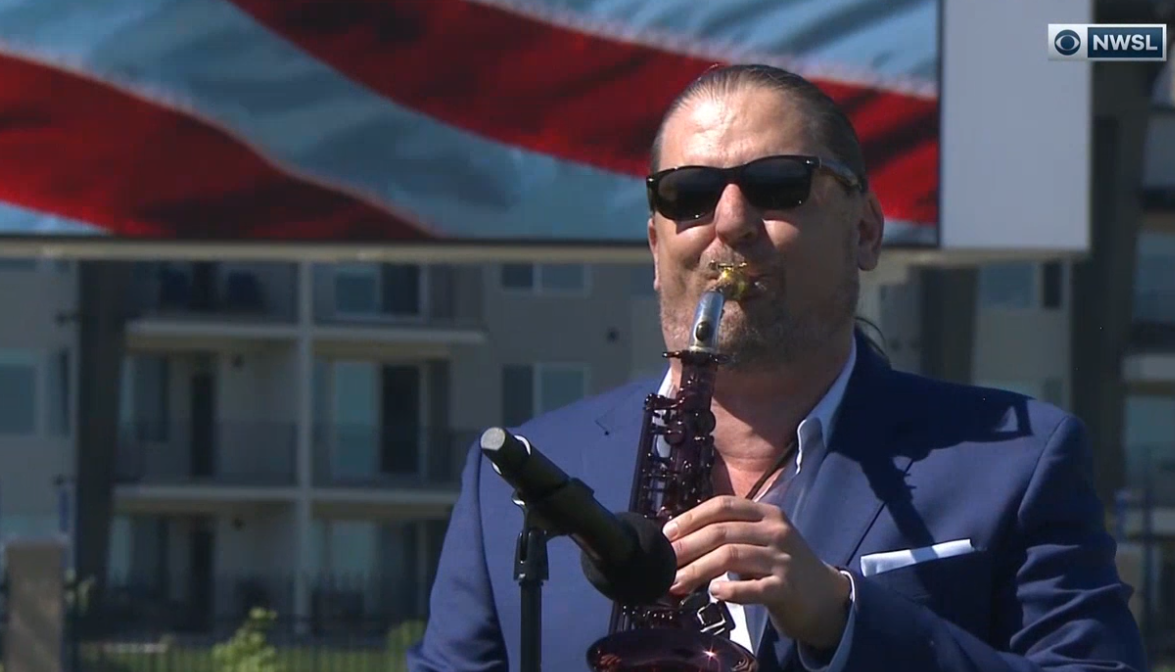
This strange image just about summed up the odd sensations of watching live sports again: the seriousness of the threats against life around the globe—Black life in particular—weighs on us all. We stand in solidarity.
The Thorns played better than expected for a young squad who saw significant departures in the off-season, and it was only a late defensive lapse that cost the Thorns a point in stoppage time. Leaving Lynn Williams unmarked is a very familiar way to lose against North Carolina, but the competitiveness showed by a young team in what was effectively a preseason game was admirable. Simone Charley notched her first goal for the team off a Lindsey Horan header for the only Thorns goal in a 2-1 opening day loss.
The Thorns swapping an iconic defender in Emily Sonnett for the player taken after her in the 2016 College Draft was a huge moment in the off-season. Rodríguez (affectionately called “Rocky”) has been a solid NWSL contributor for years, but did a midfield already stacked with talent really need another attacking player?
Yes, it turns out. Rodríguez was a killer addition in midfield, keeping the team ticking over well, holding the ball up and waiting for support, and even putting in some impressive defensive play. Getting overrun by North Carolina’s four midfielders has been an issue for the Thorns in the past, and Rodríguez’s competitive energy and strength were much-needed additions. It looks like this pairing with Lindsey Horan might work out after all.
She got thrown directly into the fire against the team that shoots more than any other team in the league, but Milwaukie, Oregon’s own Bella Bixby had an impressive NWSL debut. She got tempted off her line unadvisedly for the Courage’s first goal, but otherwise showed well in her first competitive minutes, getting called upon regularly to defend her near post, nabbing everything she could in the air and holding some real rockets from distance.
AD Franch being a late scratch for the whole tournament was bad news for the team. But this is such a weird tournament, one where the Thorns get to try out stuff they normally wouldn’t. Giving Bixby a chance after two years with the club feels right, and she didn’t disappoint. It’s hard to feel like the future isn’t secure.
Seeing Tyler Lussi and the newly-signed Marissa Everett in the starting lineup threw a few people for a loop. While both players who have made an impact in their minutes for the club, they seem like they would be further down the depth chart than others. After halftime though, it quickly became clear what the plan was: Morgan Weaver and Simone Charley were double-subbed on for the starting forwards and immediately went to work, with Charley scoring and both looking dangerous the remainder of the game.
Charley has been minutes-limited in her time with the club, even in normal NWSL play. She’s clearly a sprinter who leaves it all on the field, and up against tired defenses, this could be a real game changer. Weaver is still getting used to professional fitness. Especially in the opening stages of this tournament, both can be maximized by holding them in reserve from the start. And with five substitutions now allowed per game, why not? It’s a pretty different approach to soccer than most people think of (where your best players must always start) but it’s worth a shot, and it will be interesting to see if it stays the same through the knockout rounds.
The Thorns defense has many qualities. They are not as fast as the North Carolina Courage’s attackers. Therefore, they should sit back as deep as they can, right?
Wrong. Becky Sauerbrunn, playing in her first game in Thorns colors, played her markers incredibly aggressively, coming well upfield to head away from Lynn Williams. Kelli Hubly, starting her first game in a while, looked excellent going to ground to win balls near the edge of North Carolina’s penalty box to unsettle them and prevent them from having an easy time building out of the back. It’s hard to say it didn’t work.
And yet, at the same time, the winning goal was conceded because Sauerbrunn was caught upfield trying to cut out a pass, which left two Courage players unmarked at the back post, when most would probably say that the team should have been trying to protect a point.
There’s no doubting that the Thorns made a real impact on the Courage’s midfield buildup in this game, and it cut down on their shooting opportunities throughout. Looking a little foolish once or twice on the break is normally a trade-off that the team will take. Some one has to step up and be the hero in that kind of situation, and looking at Bixby’s face after she conceded, she clearly felt like it should have been her. Those kinds of decisions will get more automatic for her in the future, but she shouldn’t feel too bad about it: the team made a calculated gamble—one that meant that they would sometimes end up in those situations.
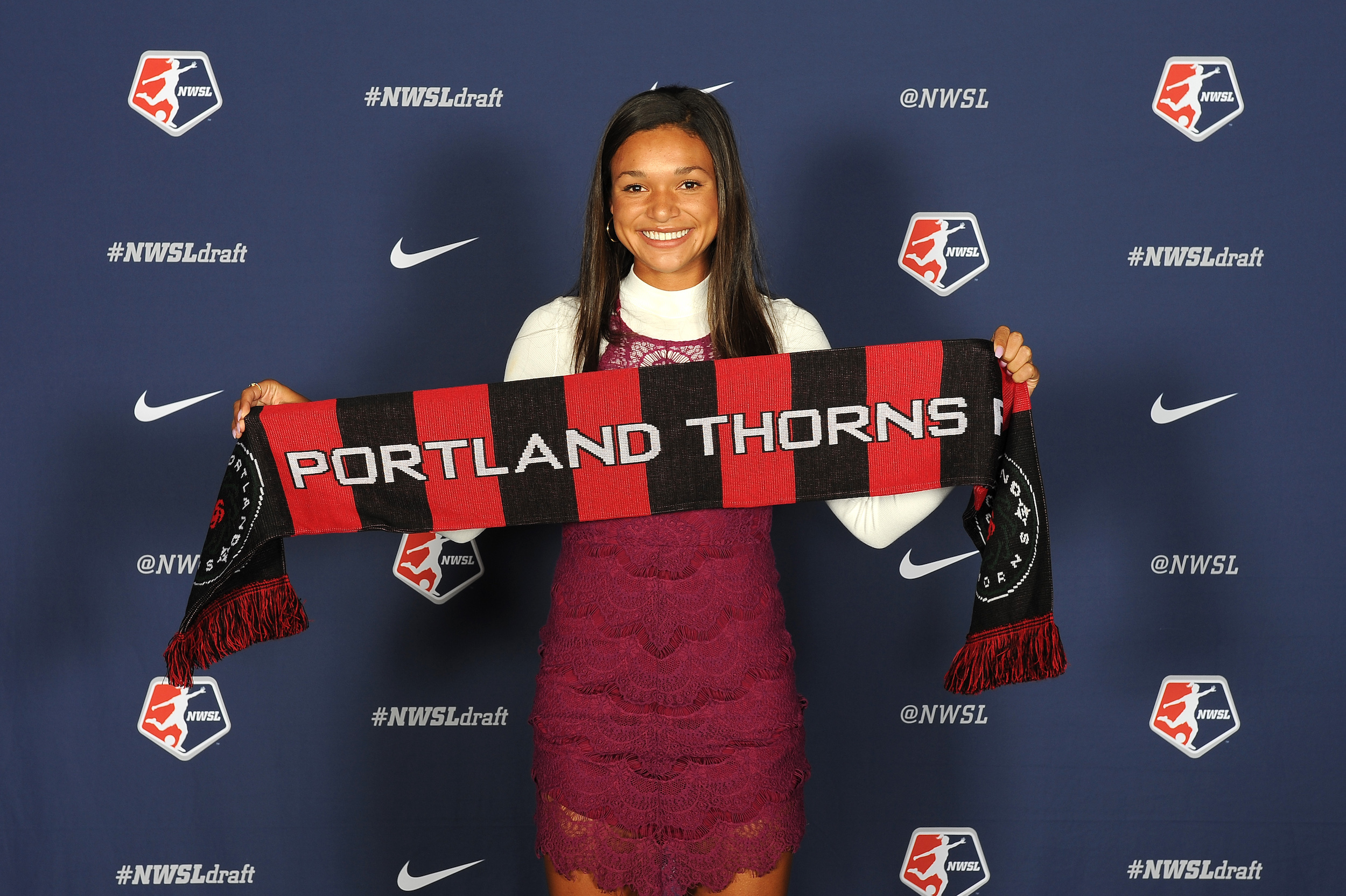
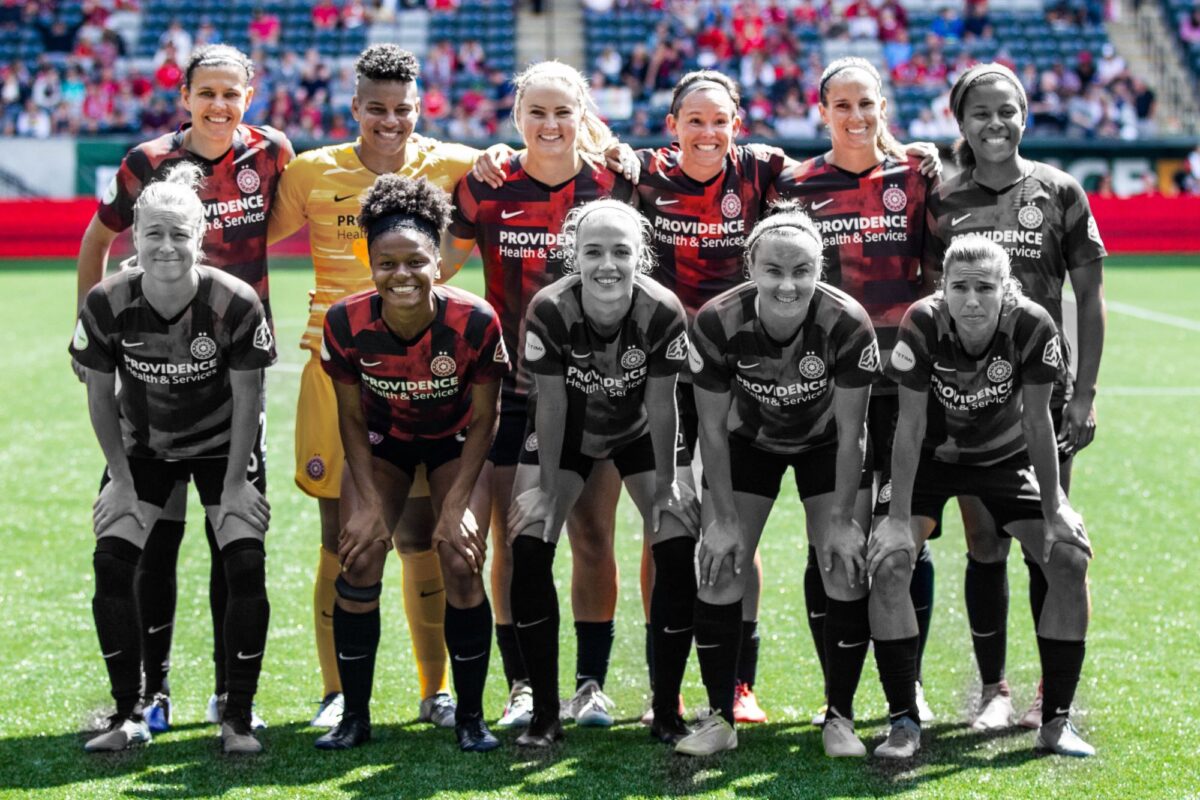
With the NWSL set to become the first American sports league to attempt a restart, the eight teams—minus the Orlando Pride, who, as we learned Monday, will sit out due to multiple positive COVID-19 tests on the team—that will participate in the Challenge Cup released their rosters yesterday.
One thing is certain: between a huge amount of offseason tumult and a stack of last-minute contracts—not to mention yesterday’s announcement that Tobin Heath will not participate—this won’t be a Thorns team we’ve ever seen before. A few of our thoughts on the newly announced roster are below.
The Thorns, presumably, had a plan heading into this season. Amid whispers of a needed culture change, the club sent half the roster packing, snagged two promising young forwards at the draft, and made moves for Becky Sauerbrunn and Rocky Rodríguez. Fill in a few more blanks, and it’s easy to envision a good soccer team materializing—but those blanks never got filled. What we’re left with is pieces to a whole that never got finished.
Things were cast into even more doubt last week with the departure of Ellie Carpenter. With her departure, Sauerbrunn—a legendary but aging, and slowing, center back—starts to look less adequate as the season’s big defensive acquisition. The team has options at right back, but it’s hard to envision any of them filling Carpenter’s shoes on day one against North Carolina.
But here’s the good news: soccer is a game. More good news: this “season” isn’t real. Even more good news: historically, the Thorns have played some of their most fun, memorable games without their veterans. This isn’t the same as a World Cup or an Olympics—Lindsey Horan and Christine Sinclair will be there—but the tight schedule means we’re sure to see more squad rotation than we normally would. The sheer volume of new names on this roster means it’s impossible to guess which players are going to be the Meg Morrises or Simone Charleys of this tournament.
That’s not to mention the proven names new to this Thorns roster; Rodríguez obviously falls into that category, as does, I would argue, Sophia Smith. This group of forwards, in particular, is mostly quite young, and none of them are French, but I’d bet they’re going to be a hell of a lot of fun to watch. Wacky stuff is going to happen in this tournament. Let’s enjoy it, yeah?
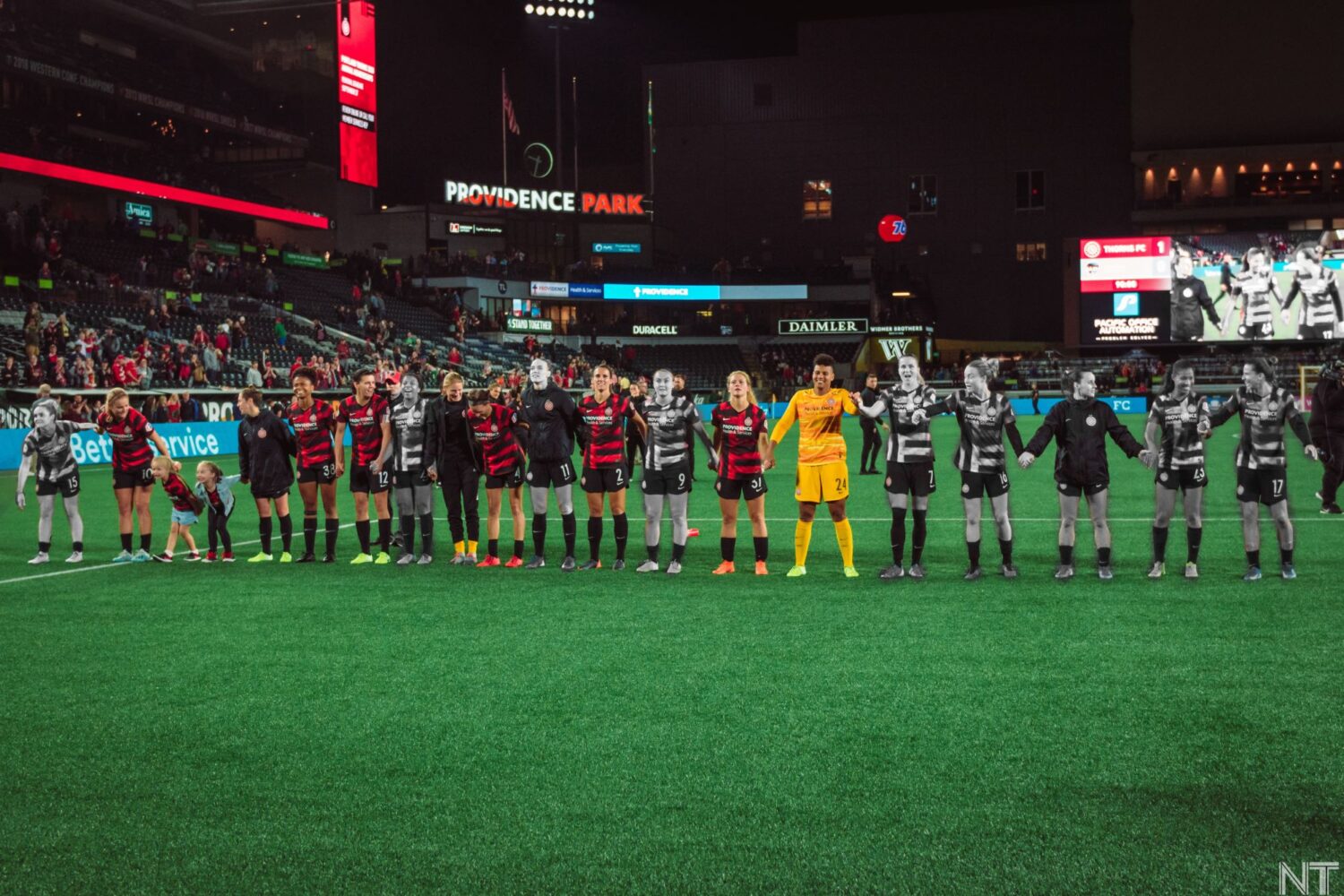
I have this theory that’s going to sound ridiculous when I say it, but bear with me: Horan is a problem. More specifically, the role Horan plays for the Thorns is a problem.
In 2016 and 2017, Portland deployed Horan and Amandine Henry in the central midfield as dual No. 8s. Both could play disruptor, both could set plays in motion, and both could make forward runs and score themselves. They would trade off on these duties, one sitting back while the other pushed into the attack, and this worked because Henry is just as good at all those things as Horan.
When Henry left, Mark Parsons wanted to continue using the same system, swapping Andressinha in alongside Horan. This went… less well. Andressinha simply isn’t a strong or physical enough player to fill that role. Since then, a succession of players have been tapped to fill that third midfield slot, including Celeste Boureille, Dagný Brynjarsdóttir, and Gabby Seiler. Boureille, for a moment in 2018, worked well; she doesn’t have Henry or Horan’s creative brilliance, but she proved to be a good disruptor deep in midfield. Seiler, for a still briefer moment in 2019, looked even more promising. But none of them have played as Horan’s double like Henry did—unsurprising, seeing as none of them are in the conversation for being the best central midfielder in the world.
This is the question: is there another player anywhere on earth capable of playing a second No. 8 alongside Horan as effectively as Henry did?
Parsons intends to try again with Rodríguez. On its face at least, this makes a lot more sense than trying to convert Andressinha into a No. 8 did, seeing as Rodríguez has played a box-to-box role in the NWSL, you know, ever, although never in the same system; at Sky Blue, she played alongside Sarah Killion, a much more defensive player than Horan. The question is how well Rodríguez can partner with a player who, at any moment, can show up anywhere on the field.
I’d describe myself as curious, leaning toward optimistic about this. At any rate, I’m excited to see Rodríguez, who I think has been underperforming for a few years, in a new environment. And if it doesn’t turn out? Try her at right back, why not!
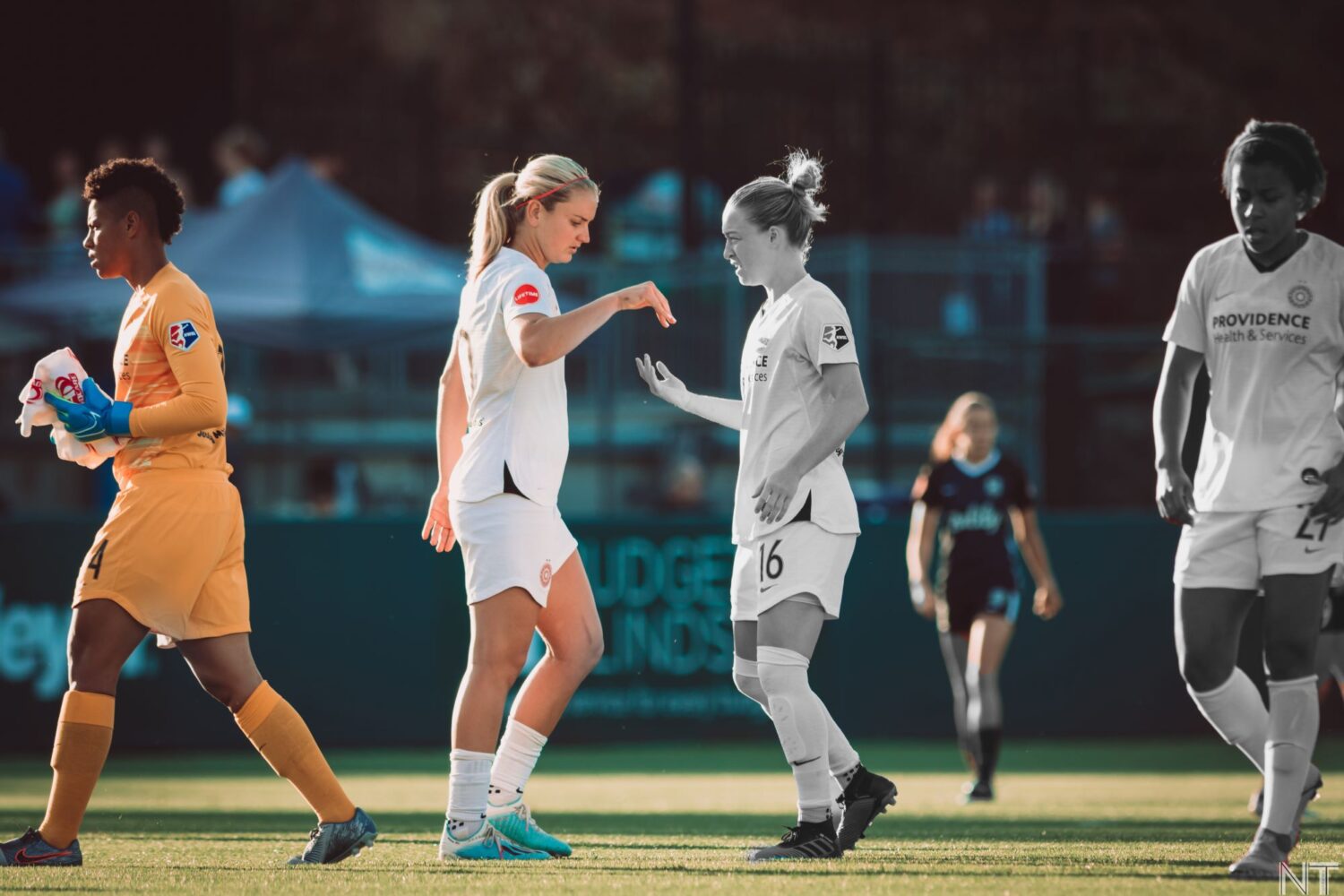
With all of nine players listed as defenders on this roster, one presumably would not have as many questions about Portland’s back line as I do. With a schedule that has the Thorns playing their opening three games over the course of nine days, rotation is going to happen, and I think it’s going to happen sooner than we expect.
If you look at a back four of Meghan Klingenberg, Emily Menges, Sauerbrunn, and Katherine Reynolds, something comes to the forefront pretty quickly: three of them are over 30 and two of them aren’t particularly fast. (Menges, of course, is the exception in both these statements, and Sauerbrunn isn’t slow, per se, but as Katelyn points out above, she’s definitely past her peak.) And while they’re all very capable players, the quartet leaves something to be desired against a fast, high-pressing North Carolina.
On the other hand, Parsons isn’t exactly known for throwing young players into the line of fire. But if these games don’t really matter, there’s no time like the present to experiment, right? Yeah, there’s still Kelli Hubly and Christen Westphal—and where is Seiler going to play? As the No. 6 in a diamond midfield? Somewhere in defense?—but I personally think it would be very cool if Madison Pogarch got the start on Saturday. And why not give Meaghan Nally and Autumn Smithers some time in this tournament while we’re at it?
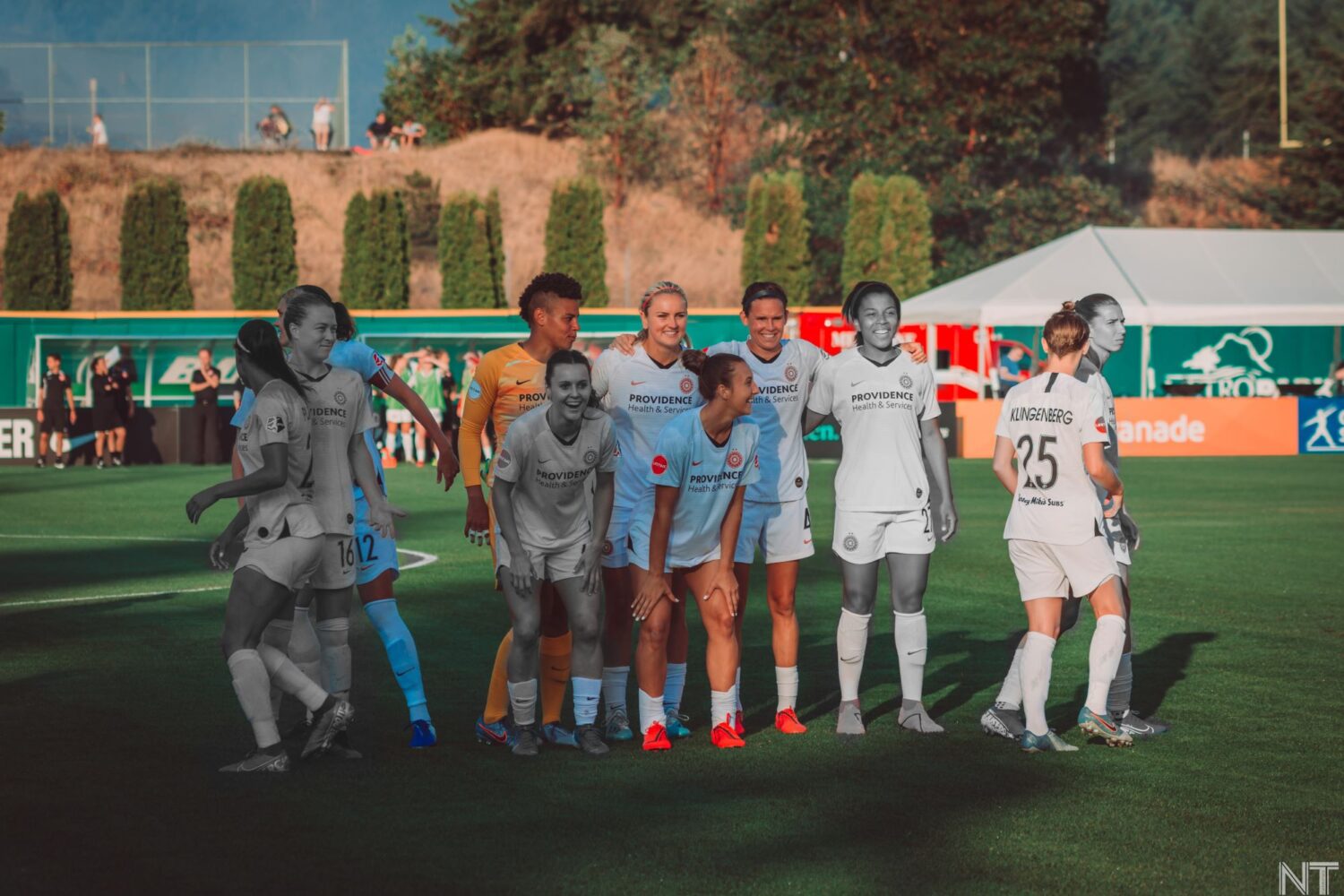
Guess what I remembered today? Two-time NWSL Goalkeeper of the Year Adrianna Franch still plays for the Thorns. Not only that, but she won’t be missing games that she could be playing with the Thorns for national team duty.
Given the experimentation we’re going to see with this team, having arguably the best keeper in the league—and undisputedly the one with the best handling—means, worst comes to worst, at least we’ll see some great goalkeeping.
Tobin Heath has chosen to stay at home for this tournament. That is her right as a player, and it’s one that all the players in the NWSL have, as guaranteed by the negotiations between the player’s association and the league. Looking at the state of coronavirus cases in the US and Utah specifically, it’s a perfectly reasonable decision to make, and knowing how much she lives for soccer, it has to be an incredibly painful one.
What it means for the team is that, with the departures of Midge Purce, Hayley Raso, and Caitlin Foord in the offseason, no regular-rotation players from the 2019 forward line will play in the NWSL Challenge Cup. Sure, Christine Sinclair is listed as a forward, but you and I both know that’s not how it works, and in a compressed schedule, it’s even less how it works. Sinclair is simply not going to be running around full tilt for 90 minutes on three day’s rest, as much as I’m sure she wants to.
No, the forward line is going to a rotation of players who, while extremely talented, haven’t proven themselves as starters in the NWSL yet. This is going to be an attacking bullpen with no hierarchy and no secure starting places. Expectations are high for some of the talent on hand, but there’s quite a bit of depth, so the team can afford to take some risks if things need to be shifted around.
Heath has such gravity in the team and is so important that when she’s in the team they will almost always play in a very specific way, with Heath one of the three up front drifting inside. No one plays exactly how she does, so without her, Parsons has experimented with back threes, relying on wingbacks for depth. But with Carpenter’s departure, the team has only one proven attacking option from deep in Klingenberg.
So where is the attack going to come from? Sophia Smith and Morgan Weaver, the Thorns’ first-round draft picks, were both wide players who specialized in cutting inside and shooting in college. The Thorns could, in theory, play only them up top and load up another player in midfield to get more creation there. That would mean leaving Simone Charley and Tyler Lussi out of lineups though, and both are high-energy players whose styles of play, in totally different ways, can completely throw defenses off guard. Charley’s ability with the ball at her feet on the break, and Lussi’s combination of strength and shooting mastery will both likely prove useful up against different defenses. Marissa Everett showed off a knack for poaching shots in her limited minutes last year, impressing the team enough to earn a contract this year, and Anika Rodriguez, yet another undrafted player the Thorns picked up this offseason, flashed some creative passing playing alongside Ashley Sanchez at UCLA. The depth probably doesn’t even end there. Parsons loves throwing young defenders into the fray as attackers: this is where Pogarch got her first minutes for the club, so the new defenders could absolutely see some minutes there. The possibilities seem endless. It’s now on these young players to make the most of their opportunities.
Goalkeepers (3): Bella Bixby, Britt Eckerstrom, Adrianna Franch (FED-USA)
Defenders (9): Kelli Hubly, Meghan Klingenberg, Emily Menges, Meaghan Nally (CDP), Madison Pogarch, Katherine Reynolds, Becky Sauerbrunn (FED-USA), Autumn Smithers, Christen Westphal
Midfielders (6): Celeste Boureille, Lindsey Horan (FED-USA), Emily Ogle, Rocky Rodríguez (INTL), Angela Salem, Gabby Seiler
Forwards (7): Simone Charley, Marissa Everett, Tyler Lussi, Anika Rodriguez, Christine Sinclair (FED-CAN), Sophia Smith (CDP), Morgan Weaver (CDP)
Key: CDP—2020 NWSL College Draft pick; FED—Federation Player; INTL—International Player
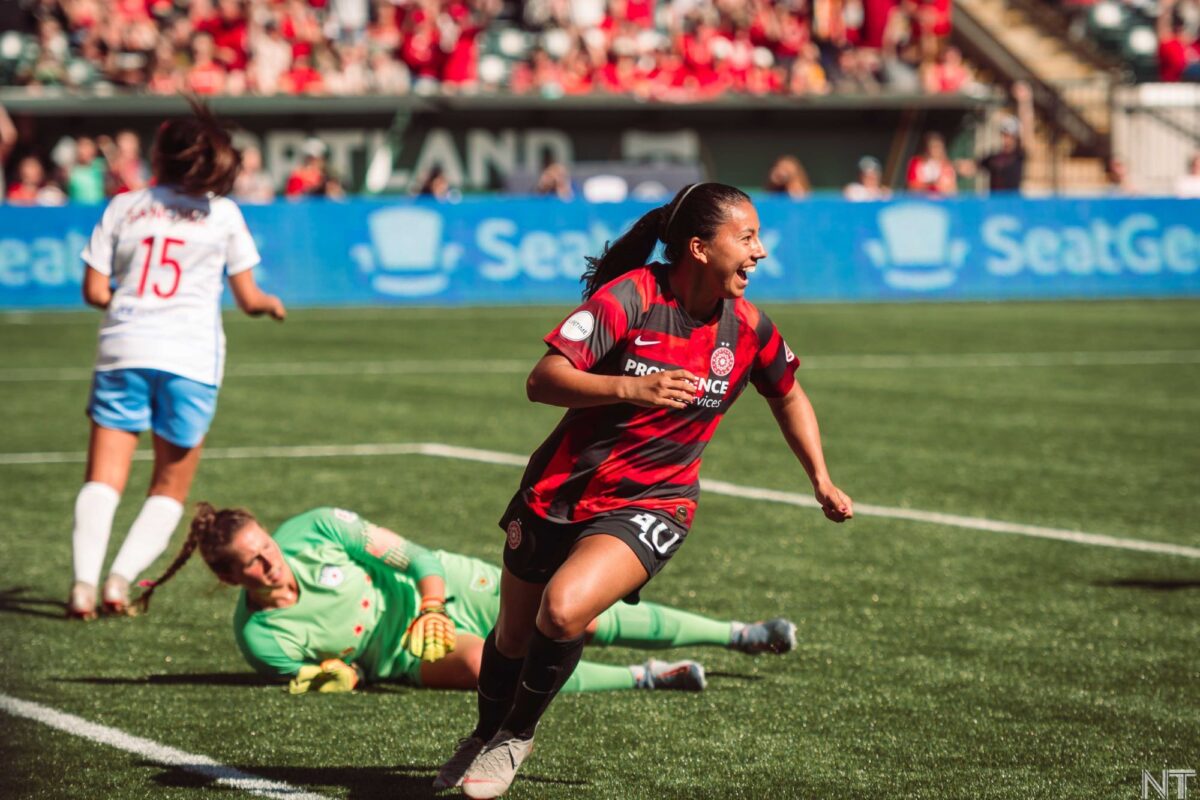
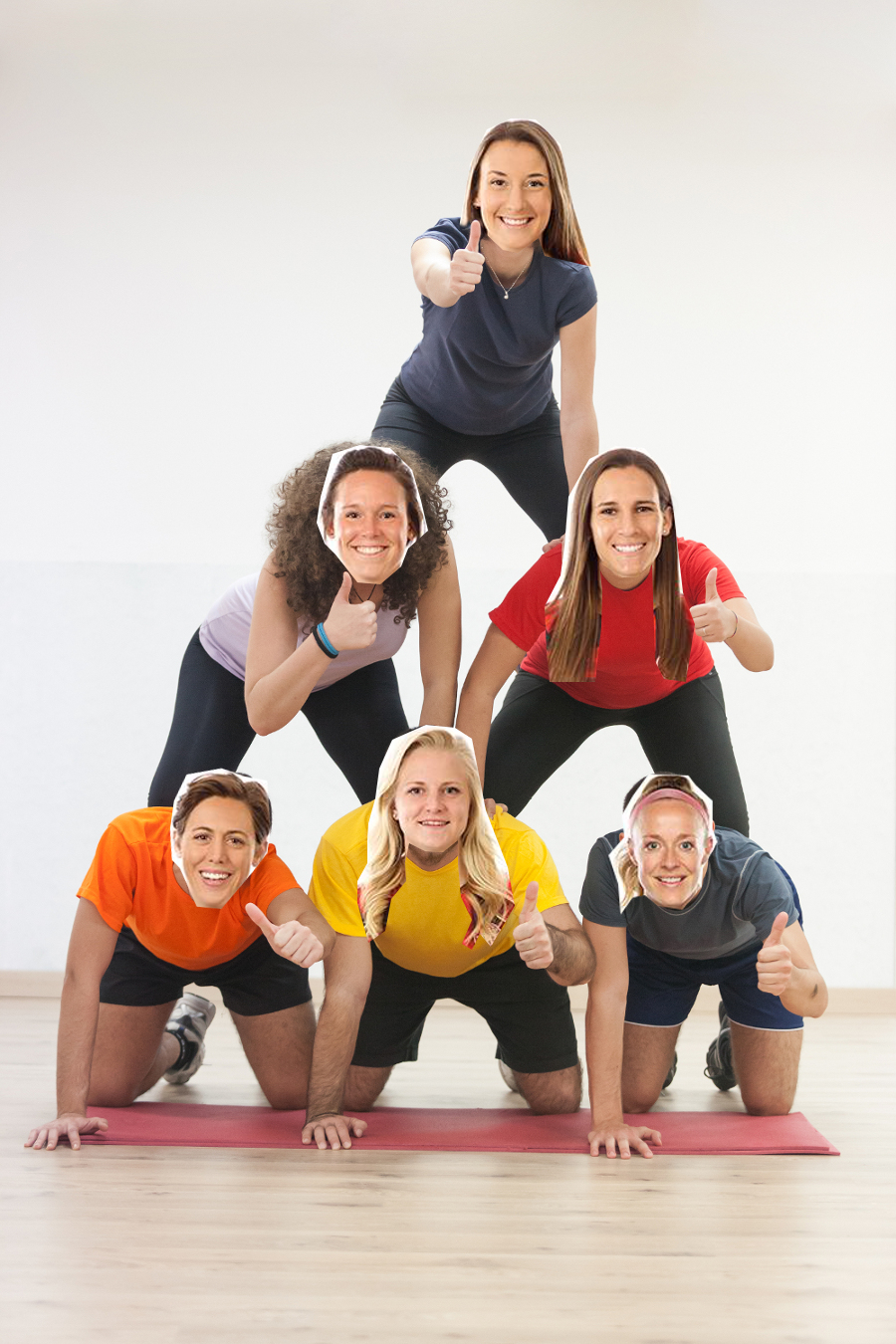
If you’re scratching your head at yesterday’s news that the Thorns have transferred Ellie Carpenter to Olympique Lyonnais, you’re not alone. Carpenter was one of the best outside backs in the league, famously matching up well in one-on-one situations against world-class offensive players like Megan Rapinoe. She also had something you can’t teach, something the rest of Portland’s back line—especially with Emily Sonnett having been swapped out for the 35-year-old Becky Sauerbrunn—is largely lacking: speed.
That’s of special concern when we look at the first matchup on the schedule in Utah: the North Carolina fucking Courage.
If starting the Challenge Cup against the back-to-back shield and championship winners wasn’t tough enough, the tournament format may make matters even harder. The Thorns tend to start slow and improve throughout the season; they don’t have time for that in Utah. They have to figure out how to win right away, and with an unproven offense, defense will be key. So who will shore up Portland’s back line in Carpenter’s absence? Let’s get into the Xs and Os and take a look at a few ways this defense could line up.
Gabby Seiler seems as likely an option as any at right back. She’s been stymied by major injuries twice now, once before she’d reported to the team as a rookie, and then last year when she tore her ACL, but in the minutes she has gotten, she’s shown she can play at just about any defensive position. I’d argue she’s best employed as a No. 6, but with Parsons saying he wants to line Rocky Rodríguez up alongside Lindsey Horan as dual No. 8s, there isn’t room for her in a three-woman midfield. Seiler may not be as fast as Carpenter, but she had a 66.9% success rate in duels last season, better than Carpenter’s 42.9%, and she has both the physicality and the brains to stand up to the league’s toughest players.
Madison Pogarch only played a handful of minutes in 2019, so she’s something of an unknown quantity. I do know the coaching staff is high on her, and that she’s fast and hard-working. I also remember watching her in preseason in 2019 and thinking, “wow!” Since that tournament wasn’t streamed, I have no way of confirming that memory. I’d say she’s a solid back-up option for Seiler.
Back in 2014, Paul Riley’s Thorns team team had a certain mystical quality where they were simultaneously good and bad, and also neither, at any time. This was a team that could beat the eventual champions 7–1 one week and then lose to Boston the next. It was high-concept soccer, where the concept was that it doesn’t matter how many goals you concede as long as you score one more than that.
Riley has grown as a coach since then. He still plays an extremely attacking style, but North Carolina’s defense has also been the stingiest in the league the past two seasons. So here’s my idea: since the Courage offense is all but unstoppable, why bother trying? Instead, Parsons could take a page from Riley’s own playbook and focus all the energy on breaking down that defense and scoring more goals than the opposition. That could look something like this:
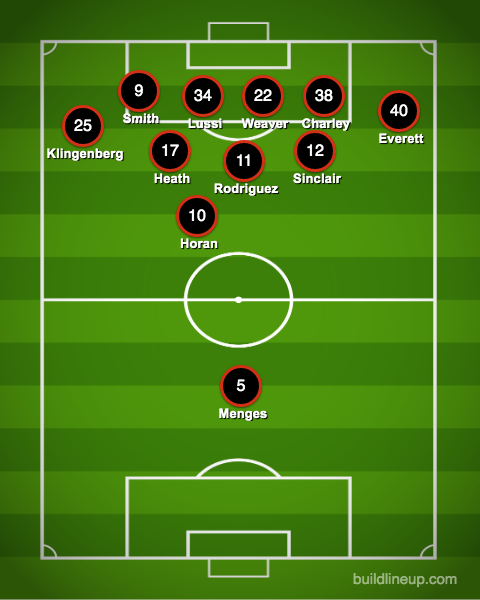
The strength of this lineup starts with its front line of Sophia Smith, Tyler Lussi, Simone Charley, Morgan Weaver, Meghan Klingenberg, and Marissa Everett. All four strikers are fast; some are also technical and/or physical. Kling will play in her normal role, minus the defending part. Everett is an unproven quantity, but any other player on the roster runs the risk of being too defensive in that position. Tobin Heath, Rodríguez, Christine Sinclair, and Lindsey Horan will all both feed the forward line and make overlapping runs themselves.
Emily Menges is the goalkeeper, but will be tasked with covering the whole defensive half of the field as well as she can—as well as scoring, if possible. Let’s win this thing 15–14.
The spiritual opposite of the “don’t defend” strategy is the human pyramid. I’ve looked, and as far as I can tell there’s no rule against this.
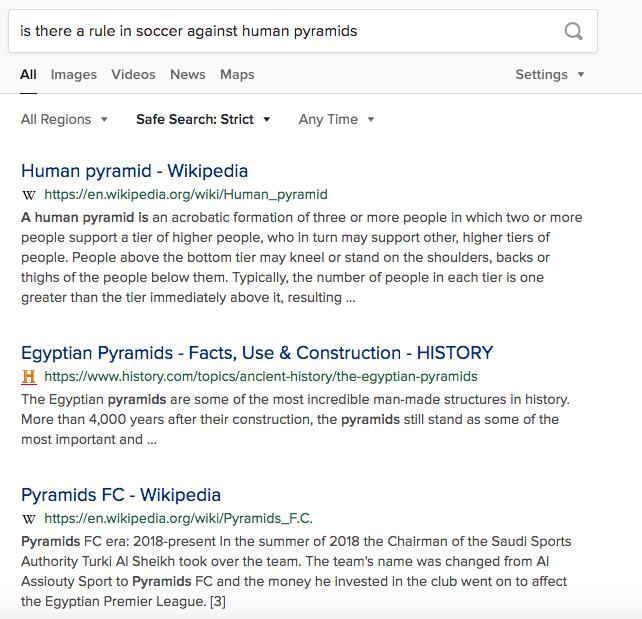
I’m not envisioning a true human pyramid, but here’s the concept: build a wall on the goal line, then have the remaining players sit on the shoulders of the players in the wall. Where’s the ball going to go?
AD Franch can play in front of the player stack. Every time she catches the ball, she wastes as much time as possible, then kicks it as far away as she can. The concept here, obviously, is to play for a 0–0 draw, but it’s not hard to imagine the Courage getting so sick of this that at some point, the shoulder-sitters, with their fully rested legs, can rush the other goal and sneak one in.
She’s had to do it before. Why not this time?

With the MLS is Back Tournament set to kick off less than a month from now in sunny Orlando, Florida, there are still questions to be answered about basically every aspect of the league’s return to play.
How will MLS cope with spiking COVID-19 cases in Florida as the country struggles to implement the proper measures necessary to fight the pandemic? Who will broadcast the games and make them available to soccer-starved fans? After a four-month layoff, will teams be able to put together anything approaching a coherent game of soccer?
But before all of that can be addressed, there is one question that looms above all others: how the hell are you supposed to abbreviate the “MLS is Back Tournament”?
Look, nobody calls it Major League Soccer; we all call it MLS. Nobody calls it the National Association for Stock Car Auto Racing; they call it NASCAR. Nobody calls it the NCAA Division I Men’s Basketball Tournament; they call it March Madness.
The abbreviation is the name, and the abbreviation for the MLS is Back Tournament is a freaking mess.
So, let’s explore our options.
***
***

***
(Experimental Prototype Soccer of Tomorrow)
Folks complain that I don’t tweet about Epcot anymore even though it’s been closed for weeks and the only thing happening there is skunk vine growing like crazy and taking over the whole place.
— Epcot Centre (@EpcotCentre) May 14, 2020
***
(MLS is the Second American Sports League Back Tournament)
How many times am I going to have to retweet this? C'mon folks. This isn't hard. https://t.co/1fomMGxOSl
— Anne M. Peterson (@AnnieMPeterson) June 19, 2020
***
***
***
@timbersarmy as long as the team keeps paying the termite control bill pic.twitter.com/TRNpgOjeRu
— Keith Palau⭐️ (@kpduck) October 22, 2014
***
Josef Martinez is just openly trolling Orlando at this point. #ATLUTD #ORLvATL pic.twitter.com/I1XjSEPPUn
— MLS Buzz (@MLS_Buzz) August 7, 2019